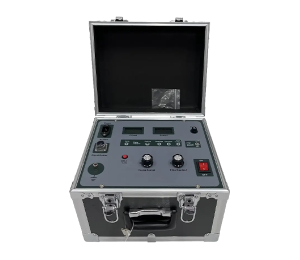 English
English



-
 Afrikaans
Afrikaans -
 Albanian
Albanian -
 Amharic
Amharic -
 Arabic
Arabic -
 Armenian
Armenian -
 Azerbaijani
Azerbaijani -
 Basque
Basque -
 Belarusian
Belarusian -
 Bengali
Bengali -
 Bosnian
Bosnian -
 Bulgarian
Bulgarian -
 Catalan
Catalan -
 Cebuano
Cebuano -
 China
China -
 China (Taiwan)
China (Taiwan) -
 Corsican
Corsican -
 Croatian
Croatian -
 Czech
Czech -
 Danish
Danish -
 Dutch
Dutch -
 English
English -
 Esperanto
Esperanto -
 Estonian
Estonian -
 Finnish
Finnish -
 French
French -
 Frisian
Frisian -
 Galician
Galician -
 Georgian
Georgian -
 German
German -
 Greek
Greek -
 Gujarati
Gujarati -
 Haitian Creole
Haitian Creole -
 hausa
hausa -
 hawaiian
hawaiian -
 Hebrew
Hebrew -
 Hindi
Hindi -
 Miao
Miao -
 Hungarian
Hungarian -
 Icelandic
Icelandic -
 igbo
igbo -
 Indonesian
Indonesian -
 irish
irish -
 Italian
Italian -
 Japanese
Japanese -
 Javanese
Javanese -
 Kannada
Kannada -
 kazakh
kazakh -
 Khmer
Khmer -
 Rwandese
Rwandese -
 Korean
Korean -
 Kurdish
Kurdish -
 Kyrgyz
Kyrgyz -
 Lao
Lao -
 Latin
Latin -
 Latvian
Latvian -
 Lithuanian
Lithuanian -
 Luxembourgish
Luxembourgish -
 Macedonian
Macedonian -
 Malgashi
Malgashi -
 Malay
Malay -
 Malayalam
Malayalam -
 Maltese
Maltese -
 Maori
Maori -
 Marathi
Marathi -
 Mongolian
Mongolian -
 Myanmar
Myanmar -
 Nepali
Nepali -
 Norwegian
Norwegian -
 Norwegian
Norwegian -
 Occitan
Occitan -
 Pashto
Pashto -
 Persian
Persian -
 Polish
Polish -
 Portuguese
Portuguese -
 Punjabi
Punjabi -
 Romanian
Romanian -
 Russian
Russian -
 Samoan
Samoan -
 Scottish Gaelic
Scottish Gaelic -
 Serbian
Serbian -
 Sesotho
Sesotho -
 Shona
Shona -
 Sindhi
Sindhi -
 Sinhala
Sinhala -
 Slovak
Slovak -
 Slovenian
Slovenian -
 Somali
Somali -
 Spanish
Spanish -
 Sundanese
Sundanese -
 Swahili
Swahili -
 Swedish
Swedish -
 Tagalog
Tagalog -
 Tajik
Tajik -
 Tamil
Tamil -
 Tatar
Tatar -
 Telugu
Telugu -
 Thai
Thai -
 Turkish
Turkish -
 Turkmen
Turkmen -
 Ukrainian
Ukrainian -
 Urdu
Urdu -
 Uighur
Uighur -
 Uzbek
Uzbek -
 Vietnamese
Vietnamese -
 Welsh
Welsh -
 Bantu
Bantu -
 Yiddish
Yiddish -
 Yoruba
Yoruba -
 Zulu
Zulu
electrical insulation tester
Understanding Electrical Insulation Testers Essential Tools for Safety and Maintenance
Electrical insulation testers are vital tools used in various industries to assess the integrity of electrical insulation systems. As the demand for reliable and safe electrical systems continues to rise, these testers play a crucial role in ensuring that machinery, equipment, and electrical installations are safe for operation and free from potential electrical hazards.
What is an Electrical Insulation Tester?
An electrical insulation tester, often referred to as a megohmmeter, is a device used to measure the resistance of insulation in electrical systems. It works by applying a high voltage to the insulation material and measuring the current that leaks through it. The resulting resistance value, often expressed in megohms, indicates the quality of the insulation. High resistance values suggest that the insulation is sound, while low values may indicate deterioration or failure.
Importance of Insulation Testing
Insulation testing is critical for several reasons. Firstly, it helps prevent electrical shock hazards and fires caused by faulty insulation. For utilities and industrial settings, maintaining effective insulation is crucial to avoid costly downtime and to ensure the safety of personnel and equipment. Regular insulation testing can identify potential issues before they escalate into serious problems, enabling timely repairs and maintenance.
Types of Insulation Testers
There are various types of insulation testers available, tailored for different applications. The most common types include
1. Handheld Insulation Testers Portable and easy to use, these devices are ideal for on-site testing in various environments. They typically feature a simple display and are designed for quick assessments.
2. Bench-Top Insulation Testers These are larger, more complex devices suitable for laboratory environments. They offer advanced features like data logging and higher testing voltages for in-depth analysis.
electrical insulation tester

How to Use an Insulation Tester
Using an insulation tester involves several steps
1. Preparation Ensure the equipment is de-energized and isolate the circuit. This step is crucial to ensure safety and to prevent damage to the tester.
2. Connection Connect the tester to the insulation being evaluated. Generally, one lead connects to the conductor, while the other connects to the ground or to the system's enclosure.
3. Testing Select the appropriate test voltage (often 250V, 500V, or 1000V) based on the insulation material and application. Start the test and observe the reading on the display.
4. Analysis Record the measurements and compare them to acceptable standards. If the readings are below the recommended resistance values, further investigation and repair may be necessary.
Conclusion
In conclusion, electrical insulation testers are essential for maintaining the safety and reliability of electrical systems. Regular insulation testing not only helps to protect personnel and equipment from electrical hazards but also supports the longevity and efficiency of electrical installations. As technology advances, the features and capabilities of these testers continue to improve, further enhancing their importance in electrical maintenance and safety protocols. Investing in quality insulation testing can ultimately lead to significant cost savings and increased peace of mind in both industrial and residential applications.
-
Testing Equipment Industry Sees Major Advancements in 2025: Smart & Precision Technologies Lead the WayNewsJun.06,2025
-
Applications of Direct Current Generators in Renewable Energy SystemsNewsJun.05,2025
-
Hipot Tester Calibration and Accuracy GuidelinesNewsJun.05,2025
-
Digital Circuit Breaker Analyzer Features and BenefitsNewsJun.05,2025
-
Benefits of Real-Time Power Quality Monitoring Devices for Industrial EfficiencyNewsJun.05,2025
-
Earth Fault Loop Testing in High-Rise Building Electrical SystemsNewsJun.05,2025



